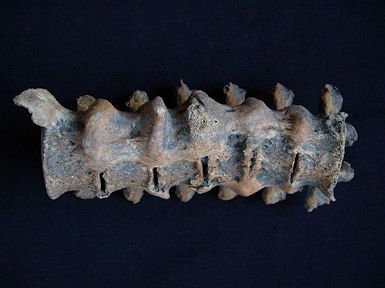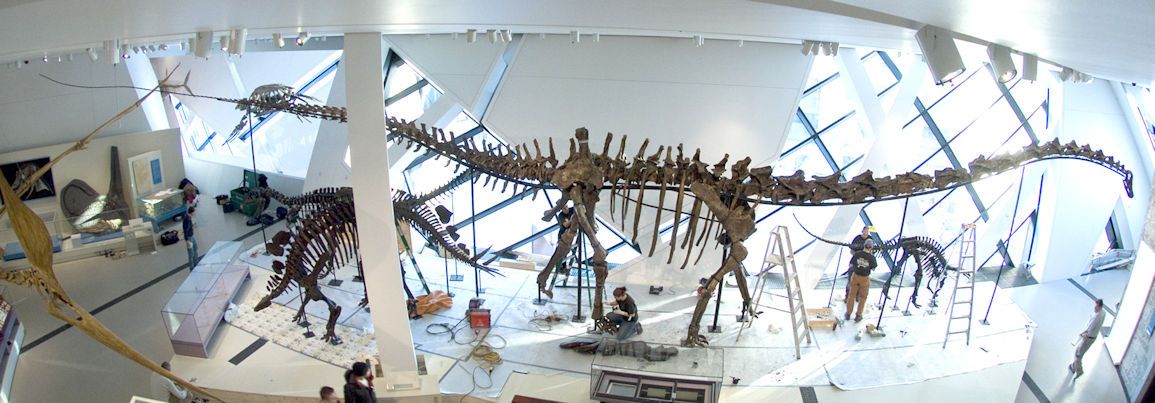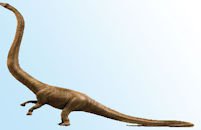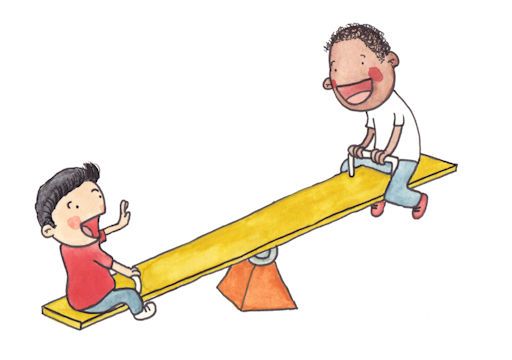Sauropods walk, skeletons talk Part 2- Translating the skeleton
Our rethinking of sauropod tails partially derives from learning how to translate the skeleton. These areas of fusion were once thought to be caused by tumors (Moodie 1916). As our knowledge improved, we realized that this was not so. Instead, the condition is identical to a ligament calcification phenomenon in humans called diffuse idiopathic skeletal hyperostosis or DISH (Rothschild, 2013). It is a protective phenomenon rather than a disease. People with DISH seem protected from back pain. Maybe sauropods were protected from the stress of keeping their tails elevated.
.
This is an image of a human vertebrae with DISH
The picturesque mounting of a Barosaurus standing on its hind legs has done much to increase public enthusiasm for these ancient animals and such speculative pose stimulated new research. Whether the exhibitors' speculation is correct is not as important as the understanding derived from the work it stimulates.

This photo is from the Dinosaur Gallery at the Royal Ontario Museum in Toronto. Notice this mount is standing and not rearing.
Posture of the rearing Barosaurus mount would place a lot of weight (perhaps 10 tons) on a lever arm, with a center of gravity significantly removed from its fulcrum (the hip).
Recall as a child, sitting on a seesaw. Maintaining a balanced, level position was relatively simple-if your friend was similar in weight. However, it took effort to move your friend from the ground to the raised position. If you sat in the front of the seat or if your friend weighed significantly more than you did, it took even a lot more effort. You had what is referred to as mechanical disadvantage.
References in this section:
Moodie, R. L. 1916. Two caudal vertebrae of a sauropodous dinosaur exhibiting a pathological lesion. American Journal of Science 41:530-531.
Rothschild, B. M. 2013 Diffuse Idiopathic Skeletal Hyperostosis. eMedicine from WebMD. http://emedicine.medscapecom/article/1258514
Coming up in Part 3: Did the tail wag the dog?


Great Part II @dinodoc! Nature's brilliant counterweight. It would be wonderful to isolate some of that great DISH DNA and have it on call for us humans. A day without backpain is like a standing Barosaurus!
This is a study that needs to be done, but we can't choose our parents.
Excellent point, Sir Dino! Excellent point. :-)
@originalworks
The @OriginalWorks bot has determined this post by @dinodoc to be original material and upvoted it!
To call @OriginalWorks, simply reply to any post with @originalworks or !originalworks in your message!